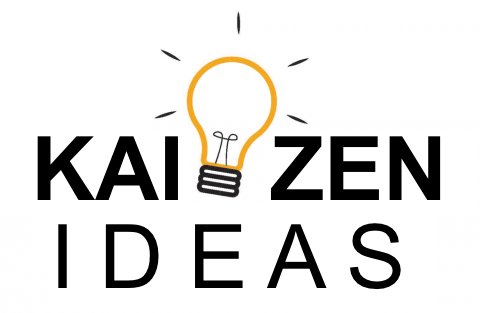Have you ever thought about What triggers ideas, or “Why do we seek change?”. This article will help increase generating kaizen ideas for leaders.
The need for change and triggering ideas are happening because of 2 simple reasons. The first reason is the brain identifies a problem so it triggers the need for change to eliminate it. The second reason is the brain identifies an opportunity that it wants to capitalise on. As soon as one of the 2 reasons have been identified the brain starts thinking of ways (Ideas) how to deal with the situation.
Generating ideas to improve is the fundamental concept of kaizen. “With every pair of hands, you get a free brain” (Brunet & New, 2003, p. 1427). Avoid Rushing into judging ideas, as it can result in ideas becoming meaningless. It is important to strike a balance between constructive criticism and judgment when determining the feasibility of ideas (Shingo, 1959). Shingo (1959) identifies twelve steps to generate kaizen ideas. These steps can be used to improve tasks, processes, machines, and operations.
Twelve Steps to Generate Kaizen Ideas
- Eliminate: Identify processes and check if a process can be eliminated while still maintaining or improving the goal. Ask “Can the process be discontinued?”.
- Perspective – An opposing view point: To change or reverse perspective by changing the way one looks at a process. An example is, rather than thinking on how to lift a product onto a scale think of what can I do with the scale so lifting is no longer required.
- Deviation – Managing by exception: Focus on uncommon and nonstandard. Examples are managing attendance by absence and counting the defect parts rather than the good parts.
- Adaptation – Two categories of phenomena: The two categories are variable versus invariable (things that change and things that are constant). This step focuses on changing variable things into invariable and checking an invariable thing that can be perceived as variable. Dealing with invariable things is easier and faster than variable things.
- Proportion – Keeping size in mind: Simplify or change the extremes, very large things or very small. An example of large is, storing cardboard boxes flat rather than ready made. Example of small, display small items on a screen rather than using a hand magnifier while inspecting.
- Distribution – Consolidate or disperse: Merge and combine similar activities. An examples is combining multiple forms into one and another is correcting orientation of items as a group rather than individual item (when sorting a paper stack, sort papers into two groups, one pile facing upward and the other downward. Once finished, flip the downward rather than flipping every downward paper).
- Functionality – Boosting efficiency: One way of thinking of this is combining tools where repetitive use of multiple tools is required. Another way is separating items after combining them by function. This can be used for handling small parts in large quantities. It works by dividing the parts into two piles, and using one till it is depleted then moving to the second. The advantages of it is controlling stock and there are no old parts that are sat and not used.
- Economy – Making the most of motion: After analysing people’s motions, add or eliminate an element of the process. As an example, when replacing two loads with one set location operator motion is high. Adding an extra location reduces the operator motion.
- Direction – Finding flow: Arrange a process or a flow in parallel or series. An example is designing a jig where operators can do several tasks at once. Another example is splitting a complicated assembling process into sequential activities where the operator can focus on one aspect at a time.
- Rearrange – Switching the order of operation: An example in food manufacturing is to fill a box with a product then print the expiry date rather than printing first.
- Comparisons – Similarities and differences: Use features of items to differentiate and sort almost identical ones. An example is sorting a part based on a right-hand or left-hand by using the feature of each.
-
Redefine – Reclaiming wait time: Redesign the process to reduce the waiting time. This step focuses on increasing operator utilisation by reducing any waiting.
To generate more ideas analyse the situation/issue using these 12 steps. You can use the 12 steps defined by Dr. Shingo separately or combined to generate kaizen ideas.


Nice posts! 🙂
___
Sanny